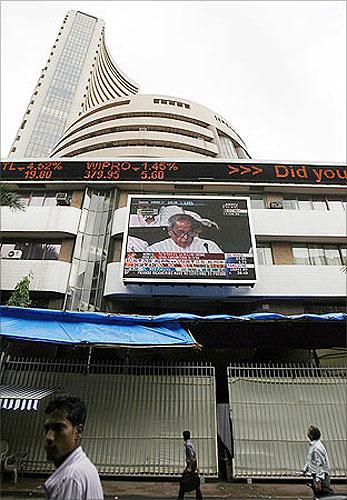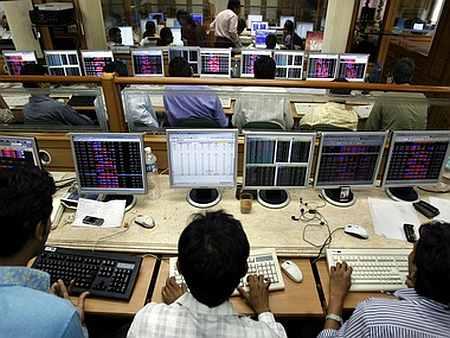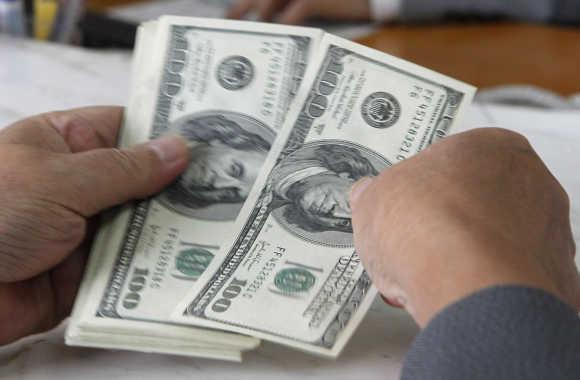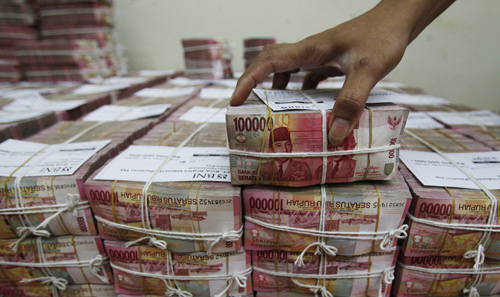Photographs: Ajay Verma/Reuters. Vidya Ranganathan
As financial markets sell off on concerns over rising US rates, what happens in India, an economy with slowing growth and a heavy dependence on foreign money, could well determine if this is merely a short-term rout or a full-blown crisis.
India's rupee currency has weakened the most among emerging markets after the South African rand since May as investors flee assets most vulnerable to the end of super-loose U.S. monetary policy.
Other markets are falling, albeit to a smaller extent, due to a reversal in flows received since 2008 when the Federal Reserve embarked on the first of its series of stimulus programs. Stock and bond markets in Thailand, Indonesia and Philippines have suffered massive outflows of funds.
"There was a lot of hot money in Thailand, Indonesia and the Philippines and these remain the most vulnerable as long as the contagion persists," said Tim Condon, Asia economist at ING, based in Singapore.
…
Economic crisis: India among most vulnerable nations
Photographs: Arko Datta/Reuters
"If one domino were to fall, I would be looking at India because of the current account deficit."
Condon thinks the odds of a wider contagion descending into a regional crisis, like in 2007 or in 1997, are extremely low.
Circumstances are vastly different. Growth in most of Asia is strong. Debt levels are high, fostered by the availability of cheap money in the past four years, but it isn't the kind of short-term fickle debt that led to the 1997 Asian crisis.
Most economists are therefore unperturbed by what they see as investor reactions to a re-pricing of risk-free U.S. bond yields, through a rebalancing of global portfolios.
Still, countries which have relied on foreign money to finance their import bills and interest payments stand out as vulnerable. That list is topped by India and Indonesia, and to a smaller extent Vietnam and Sri Lanka.
…
Economic crisis: India among most vulnerable nations
Image: Indian brokers engage in trading on their computer terminals at a stock brokerage firm in Mumbai.Photographs: Punit Paranjpe/Reuters
India and Indonesia
In the financial year that ended in March 2013, India's current account, which includes the balance of its trade and interest payments, had a deficit of $95 billion or more than 4 percent of economic output, according to estimates by Citi economist Rohini Malkani. Capital inflows were a net $92.6 billion, helping meeting that shortfall in the current account, as in recent years.
But India's troubles start now. With the rupee down 8 percent since May, short-term external debt of $92 billion, and foreign reserves of $258 billion that barely cover six months of imports, the country desperately needs to retain foreign investment and avert a balance-of-payments crisis.
UBS analysts estimate India has been the biggest recipient of equity flows in emerging markets, receiving $67 billion in inflows since January 2010 compared with $63 billion in the 10 years before that. India's stock market doubled in value between 2009 and 2012 even as the pace of economic growth slowed.
…
Economic crisis: India among most vulnerable nations
Photographs: Nguyen Huy Kham/Reuters
Economists believe improving growth prospects in Japan and the United States will provide buffers.
"It is hard to paint a picture of a crisis in emerging markets with strengthening U.S. and Japanese growth," Condon said. "I just don't think that's a good baseline scenario."
While emerging European economies such as Hungary and Croatia have massive levels of foreign debt and therefore will find it increasingly difficult to service this debt with a weakening domestic currency, countries in Asia such as South Korea, Thailand and the Philippines with foreign currency debt around 30 per cent of GDP are also likely to feel some pressure.
…
Economic crisis: India among most vulnerable nations
Image: Indonesian rupiahPhotographs: Supri/Reuters
Indonesia is more vulnerable, given how heavily foreigners are invested in its high-yielding bond markets. Foreigners have more than $31 billion invested in rupiah bonds, holding about 34 percent of the outstanding bonds.
Juxtapose that against a current account deficit of $24 billion, foreign currency reserves of about $105 billion and short-term debt nearly half the level of those reserves, and the picture is far from benign.
Belying fears about how quickly those reserves could be spent in defending the currency, Indonesia's central bank opted for a classic defense option this week. It raised policy rates, presumably to enhance the appeal of rupiah bonds.
…
Economic crisis: India among most vulnerable nations
Photographs: Sukree Sukplang/Reuters
No Crisis
Plenty of foreign money is also parked with Asian corporates that had taken advantage of low yields in euros, yen and dollars to borrow massive amounts of debt. Total debt issuance in 2012 was a record $133.8 billion, and another $88.4 billion has been raised so far this year.
As U.S. yields rise -- 10-year Treasury yields have risen 55 basis points since early May -- those holding bonds with yields pegged to U.S. Treasuries are bound to get twitchy.
For now though, no one's talking of a crisis, not with emerging markets still sitting on a fat pile of foreign currency reserves. That hoard includes China's $3.4 trillion, Hong Kong's $304 billion and Singapore's $258 billion.
Even measured as a proportion of short-term debt or money supply, reserves are plentiful, barring exceptions such as Indonesia.
…
Economic crisis: India among most vulnerable nations
Image: An employee operates a camera to zoom in on the image of a Chinese one-hundred yuan banknote at a production exhibition in Wuhan, Hubei province.Photographs: Reuters
According to ANZ, China's reserves can pay for 22 months of imports, Taiwan's covers 18 months, the Philippines has enough to cover 16 months and Thailand about 9 months.
Currency reserves cover 10 times Philippine short-term debt and 4.5 times Malaysia's. They also measure up to 65 percent of money supply in Singapore and 67 percent of that in the Philippines, which would imply lower odds of money market stress as investment leaves these countries.
"We are not looking for a balance of payments crisis in mainstream emerging markets over the next two years," UBS strategist Bhanu Baweja said in a note.
Such a crisis would typically be driven by excess short term external liabilities, which emerging markets didn't currently have. And total debt levels were significantly lower than 10 years back, especially relative to FX reserves, he wrote.
"There is a lot of wood to chop between where we are now and balance of payments crisis," Baweja said.
(Editing by Sanjeev Miglani)









article